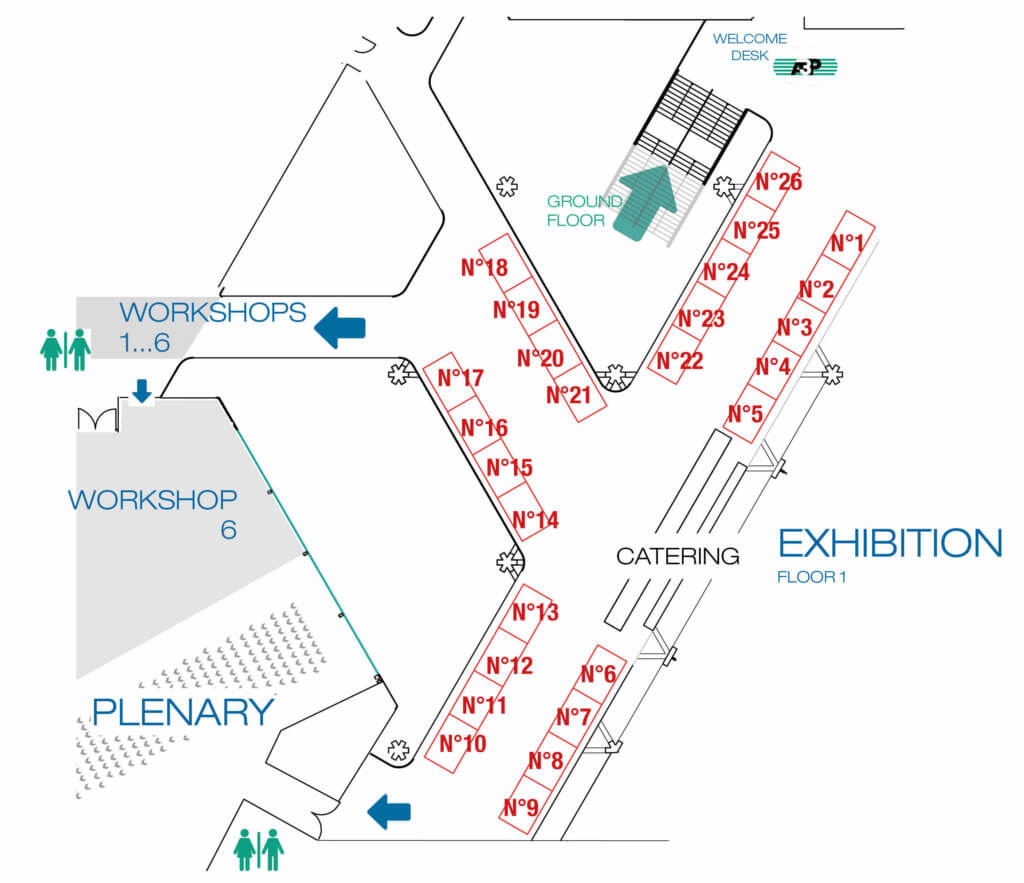A3P Cleaning & Biocleaning
Cleaning and Disinfection Barrier Technologies, Indirect Contact Part, Disinfectants, Drying, Classic cleaning validation and Freeze-dryer Themes
Location
Palais de la Musique et des Congrès Strasbourg
Date
3 & 4 april 2024
Save The Date !

Format
Conferences, Partners sessions, Exhibition
Share
Simultaneous translation of conferences : French <-> English
Wednesday 3 April 2024
Representative of The A3P Cleaning & Biocleaning GIC
Thursday 4 April 2024
Our event partners

Wednesday, April 3, 2024
Session 1
- Transformation digitale dans le contexte des programmes de contrôle de la contamination et alignement avec les directives de l'Annexe 1
- Distinction entre les données numérisées et les données digitalisées / importance de l'Annexe 1 pour soutenir les solutions de digitalisation
- Outils technologiques et véritable transformation en vertu de l'Annexe 1: critères d'évaluation d'une solution
- Intégrité des données dans une stratégie de contrôle de la contamination (CCS) et lors de l'utilisation de nouveaux outils technologiques
Session 2
Qualification | Efficacité de lavage | Efficacité de séchage | Reproductibilité | Traçabilité
- Transformation digitale dans le contexte des programmes de contrôle de la contamination et alignement avec les directives de l'Annexe 1
- Distinction entre les données numérisées et les données digitalisées / importance de l'Annexe 1 pour soutenir les solutions de digitalisation
- Outils technologiques et véritable transformation en vertu de l'Annexe 1: critères d'évaluation d'une solution
- Intégrité des données dans une stratégie de contrôle de la contamination (CCS) et lors de l'utilisation de nouveaux outils technologiques
Thursday, April 4, 2024
Session 3
- Transformation digitale dans le contexte des programmes de contrôle de la contamination et alignement avec les directives de l'Annexe 1
- Distinction entre les données numérisées et les données digitalisées / importance de l'Annexe 1 pour soutenir les solutions de digitalisation
- Outils technologiques et véritable transformation en vertu de l'Annexe 1: critères d'évaluation d'une solution
- Intégrité des données dans une stratégie de contrôle de la contamination (CCS) et lors de l'utilisation de nouveaux outils technologiques
Session 4
Qualification | Efficacité de lavage | Efficacité de séchage | Reproductibilité | Traçabilité
- Transformation digitale dans le contexte des programmes de contrôle de la contamination et alignement avec les directives de l'Annexe 1
- Distinction entre les données numérisées et les données digitalisées / importance de l'Annexe 1 pour soutenir les solutions de digitalisation
- Outils technologiques et véritable transformation en vertu de l'Annexe 1: critères d'évaluation d'une solution
- Intégrité des données dans une stratégie de contrôle de la contamination (CCS) et lors de l'utilisation de nouveaux outils technologiques
If you would like to reserve a stand, please complete the reservation form below:
| Company | N° Stand | Company | N° Stand | |
| QUASCENTA | 1 | CHRISTEYNS | 15 | |
| TERANGA GROUPE | 2 | REALCO | 15B | |
| BECKMAN COULTER | 3 | EUROFINS BIOPHARMA PRODUCT TESTING FRANCE | 16 | |
| THERAXEL | 4 | IWT PHARMA | 17 | |
| STERIS | 5 | OXY’PHARM – SANIVAP | 18 | |
| TEG | 6 | ECOLAB | 19 | |
| CARSO LSEHL | 7 | HEX + SAFYR | 20 | |
| ELIS CLEANROOM | 8 | SKAN | 21 | |
| GETINGE | 9 | AMSONIC HAMO | 22 | |
| NOVATEK INTERNATIONAL | 10 | VILEDA | 23 | |
| STAXS | 11 | DEVEA | 24 | |
| BORER CHEMIE | 12 | CONTEC | 24B | |
| SYMBIOSE ENVIRONNEMENT / SCHULKE | 13 | TECHNOCHIM | 25 | |
| COPHACLEAN | 14 | SOLIDFOG TECHNOLOGIES | 26 |
Exhibition Plan

*Exhibition plan subject to change
Services included with the Table Top stand
- A dedicated exhibition space where you can set up your products and communication tools: umbrella stand, roll-up, display, products, etc. Basic equipment including a 140×70 cm table, 2 chairs and 1 electrical connection (2kw) without circuit breaker, and the loan of a Nespresso coffee machine with pods.
- Breaks and meals as indicated in the program
- Unlimited WiFi
- A badge giving you free access to the entire technical and scientific program
- The list of event participants > available on the A3P mobile application
- Possibility of registering an additional person at the preferential “accompanying person” rate (€900 excl. VAT)
If you would like to reserve a stand, please complete the reservation form below:
Registration fee: €1,200 excluding VAT + compulsory A3P membership (additional costs apply if you are not yet a member).
To find out if you are a member, please contact us.
For prices, please see: https://www.a3p.org/en/membership/
Contact
Depending on your requirements and preferences, please contact:
- Natalina SEMEDO (program & registration) : nsemedo@a3pservices.com / + 33 (0)4 37 28 30 52
- Ludivine BAYLE (exhibition & partners) : lbayle@a3pservices.com / + 33 (0)4 37 28 30 46
Accessibilité

